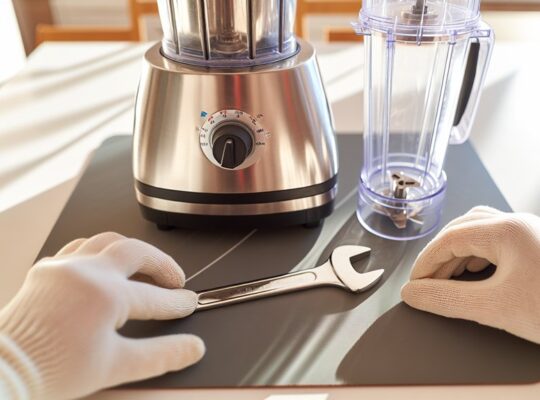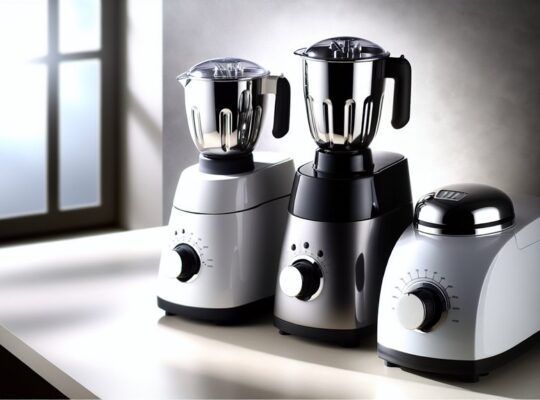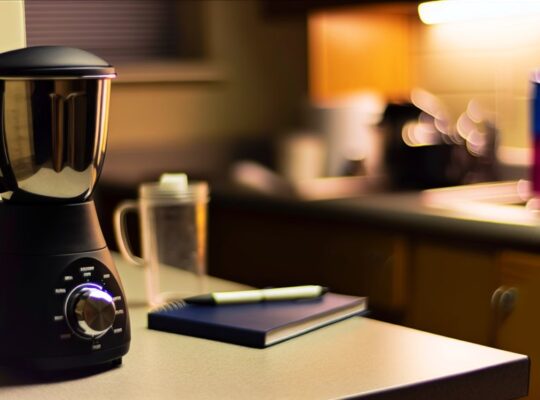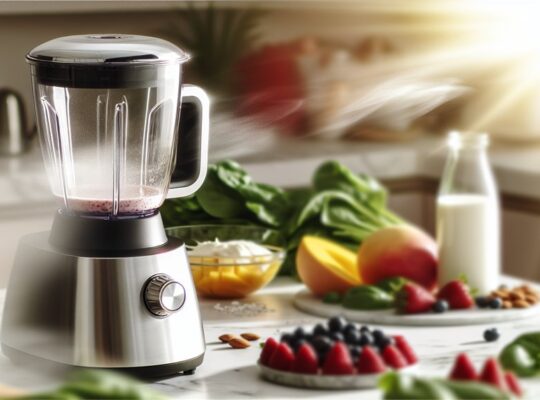When you’re choosing the best mixer grinder for juicing and blending, focus on a 600–750W motor, sharp stainless blades, and BPA-free jars for safety and durability. Prioritize overload protection and thermal cut-off, plus easy cleaning and a solid warranty to guard long-term performance. Consider jar configurations and capacity that fit your daily routines. There’s more to weigh—like maintenance ease and real-world reliability—that will influence your overall satisfaction as you compare options.
Key Takeaways
- Look for 600–750W motors with strong torque and clear low/mid/high speed ranges for chopping, soft fruits, and emulsions.
- Choose a multi-jar setup: a BPA-free large jug for smoothies and a dedicated juicer attachment for juices.
- Prioritize stainless steel blades with durable geometry and reliable sealing to prevent leaks at high speeds.
- Ensure safety features: overload/overheat protection, dry-run safety, interlocks, and a stable non-slip base.
- Consider maintenance and warranty: dishwasher-safe parts, easy disassembly, available spare parts, and solid local service.
What to Look for in a Mixer Grinder for Juicing and Blending
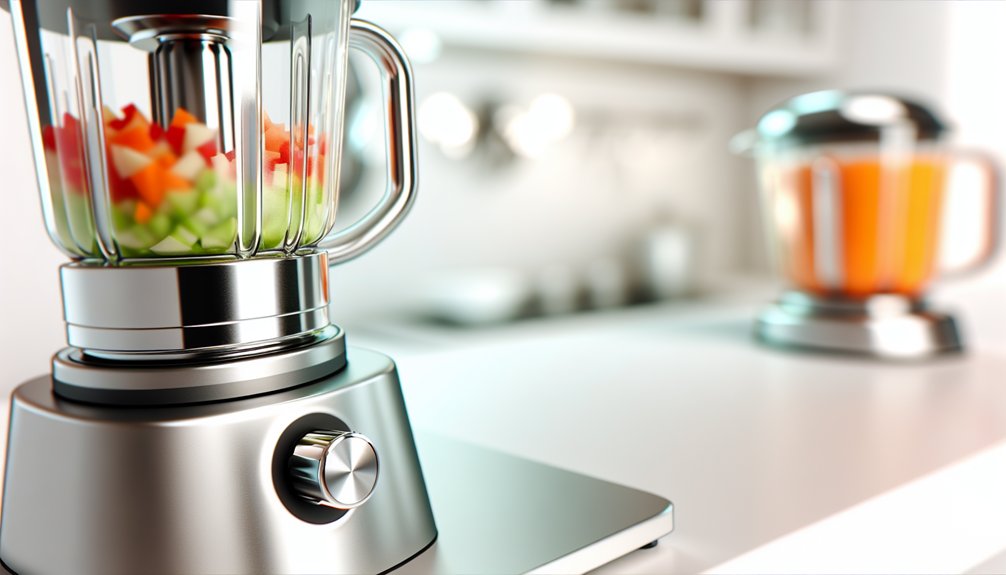
When choosing a mixer grinder for juicing and blending, start by prioritizing motor power, blade design, and jar versatility. You’ll want a robust motor capable of handling fibrous produce without overheating, with steady torque at high speeds. Examine blade geometry: sharp, durable stainless steel blades that are multi-tiered for grinding, chopping, and pureeing without clogging. Jar versatility matters too—look for a large, BPA-free jug for smoothies and a dedicated juicer attachment or high-capacity jar for juicing, plus smaller jars for sauces. Guarantee secure, spill-resistant lids and ergonomic handles for safe operation. Safety features are essential: overload protection, thermal cut-off, and non-slip bases. Finally, check build quality and ease of maintenance, including dishwasher-safe parts and straightforward cleaning to minimize risk. Overload protection ensures the motor is safeguarded during heavy loads, preserving longevity and performance.
Top Motor Power and Speed Settings for Smooth Blends
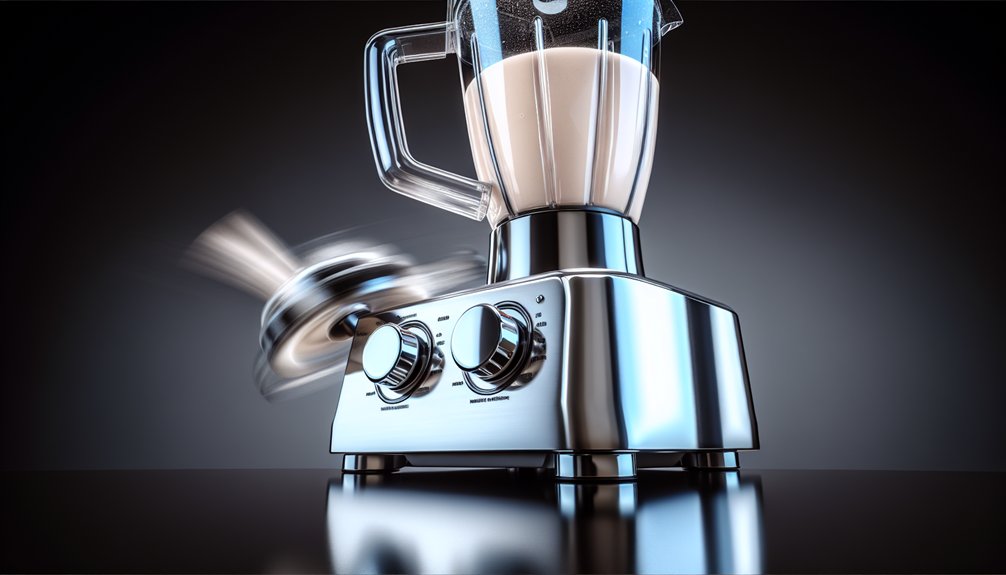
Selecting the right motor power and speed settings is essential for consistently smooth blends; start with a robust motor (at least 600–750 watts for most fibrous produce) and map speeds to textures—low for chopping, mid for blending soft fruits, high for emulsions and nut milks. You should prioritize a clearly labeled speed range and a dedicated pulse function for control. Power alone isn’t enough: torque matters, so consider gear reduction and motor responsiveness to load changes. Avoid overloading; load in moderation and allow a brief pause after bursts. For safety, use dry-run protection, shielded blades, and interlocks that prevent operation with the lid ajar. Verify stability on the base, and prefer machines with thermal protection to prevent overheating during extended sessions. The inclusion of overload protection and motor reliability in 750-watt models helps ensure consistent performance over time Overload protection and supports long-term use.
Jar Design, Capacity, and Blade Configurations
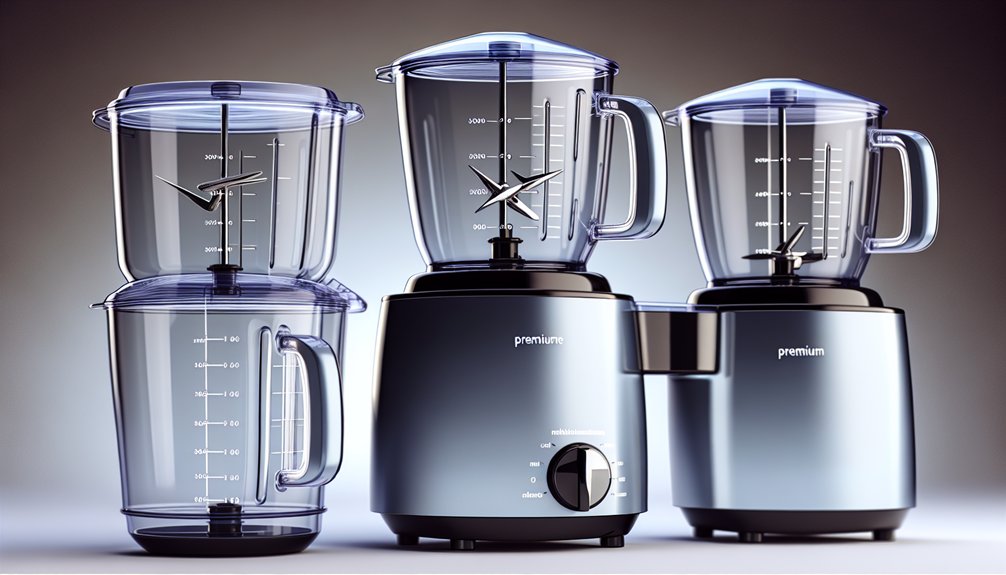
Jar design, capacity, and blade configurations directly impact performance and ease of use. You’ll want sturdy jars with secure lids and measured capacities that align with your juicing and blending needs. Opt for BPA-free materials and proven sealing to prevent leaks during high-speed runs. Consider blade geometry—tipped, recessed, and multi-pronged designs affect texture, extraction, and safety when handling hot or cold ingredients.
- Jar material and wall thickness determine resilience and grip during operation.
- Capacity should match batch sizes you routinely process, without overburdening the motor.
- Blade configuration influences texture control, from juice consistency to puree smoothness.
- Lid design and interlock safety features prevent accidental starts and spills.
Cleaning, Maintenance, and Durability Considerations
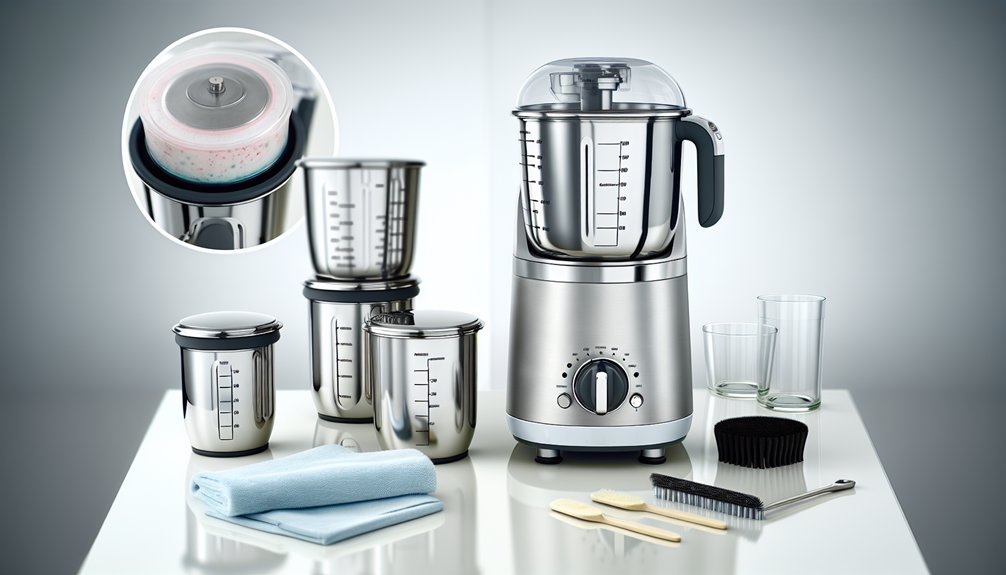
Durability and ongoing upkeep tie directly to long-term performance, so you should prioritize components that tolerate frequent disassembly, high-speed blending, and hot- or cold-temperature swings. When evaluating cleaning, choose models with accessible, dishwasher-safe parts and smooth-seam housings that resist staining and residue buildup. Prioritize materials that resist corrosion and dulling from citrus, seeds, or fibrous pulp, and verify that gaskets and seals are replaceable without specialized tools. Maintenance routines should be simple: rinse, dismantle, and air-dry after use; perform periodic blade inspections for wear or dullness; and replace worn components promptly to avoid contamination or motor overload. Look for clear service manuals, readily available spare parts, and evident safety interlocks. A well-maintained unit sustains performance, minimizes downtime, and keeps you protected during operation. Copper motor compatibility and the 2-year to 5-year warranty provide additional peace of mind when choosing a high-use mixer grinder.
Recommended Models for Various Budgets and Needs
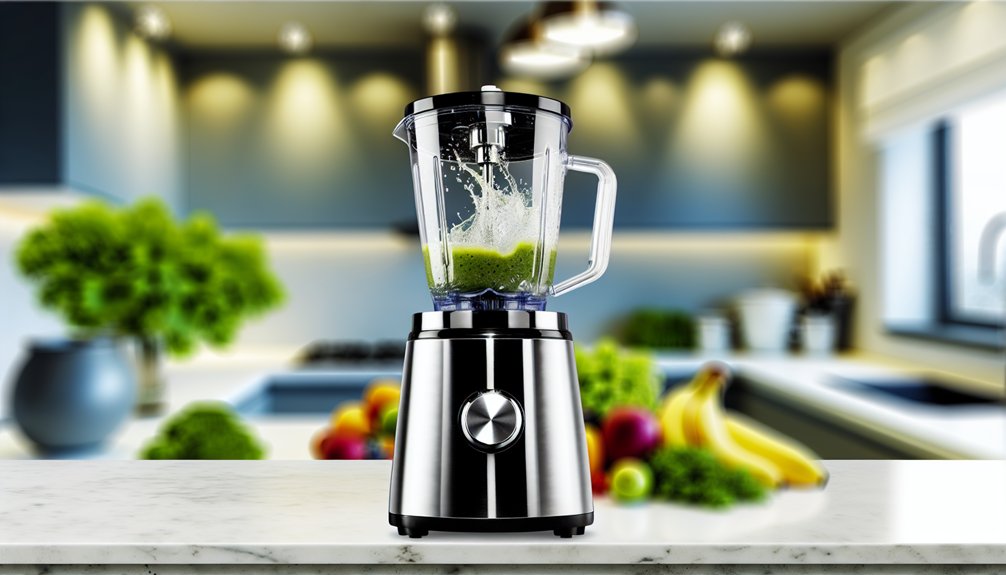
If you’ve read about cleaning, maintenance, and durability, you already know that long-term performance hinges on choosing the right parts and build quality. When budgeting for a mixer grinder, consider core factors: power, jar material, blade design, and safety features. Below are solid picks across needs and wallets:
1) Budget-conscious: reliable 500–750W models with BPA-free jars and secure locking lids.
2) Mid-range for daily juicing/blending: 750–1000W with multi-jar versatility and overload protection.
3) Enthusiast home chef: 1000–1500W, stainless steel blades, and thermal protection for continuous use.
4) Premium/high-use: robust 1500W+, precision speed controls, and dishwasher-safe parts with tamper-proof safety locks. Prioritize warranties and local service for peace of mind. Powerful motor
Frequently Asked Questions
How to Choose Between Single-Serve vs. Large-Capacity Jugs for Juicing?
When choosing between single-serve and large-capacity jugs, you should consider batch size, storage space, and cleaning effort; if you juice daily for one or two people, pick single-serve; otherwise, opt for a larger container.
Do Blender Jars Affect Nutrient Retention in Blended Drinks?
Blender jars don’t inherently change nutrient retention; retention depends on exposure, processing time, and heat. Use short, pulse blending, avoid excessive heat, and store promptly to minimize nutrient loss and preserve flavors reliably.
Which Models Offer the Best Noise Reduction During Operation?
Yes, models with vendor-rated noise levels around 60–70 dB at full speed offer the best reduction; choose ones with extra insulation, rubber feet, and decoupled motors to minimize vibration and guarantee safer, quieter operation for you.
Can Mixer Grinders Crush Ice Without Wear on Blades?
Yes, you can crush ice, but expect blade wear over time; use short pulses, keep blades sharp, and don’t overload. Choose a model with a powerful motor, sturdy build, and ice-crush preset for safer, consistent results.
Are Warranty Terms Critical for Long-Term Juicing Performance?
Yes, warranty terms matter for long-term juicing performance; they protect you against defects, guarantee replacements, and reflect build quality. Read limits, exclusions, and duration carefully, and choose a model with robust coverage and straightforward service options.

